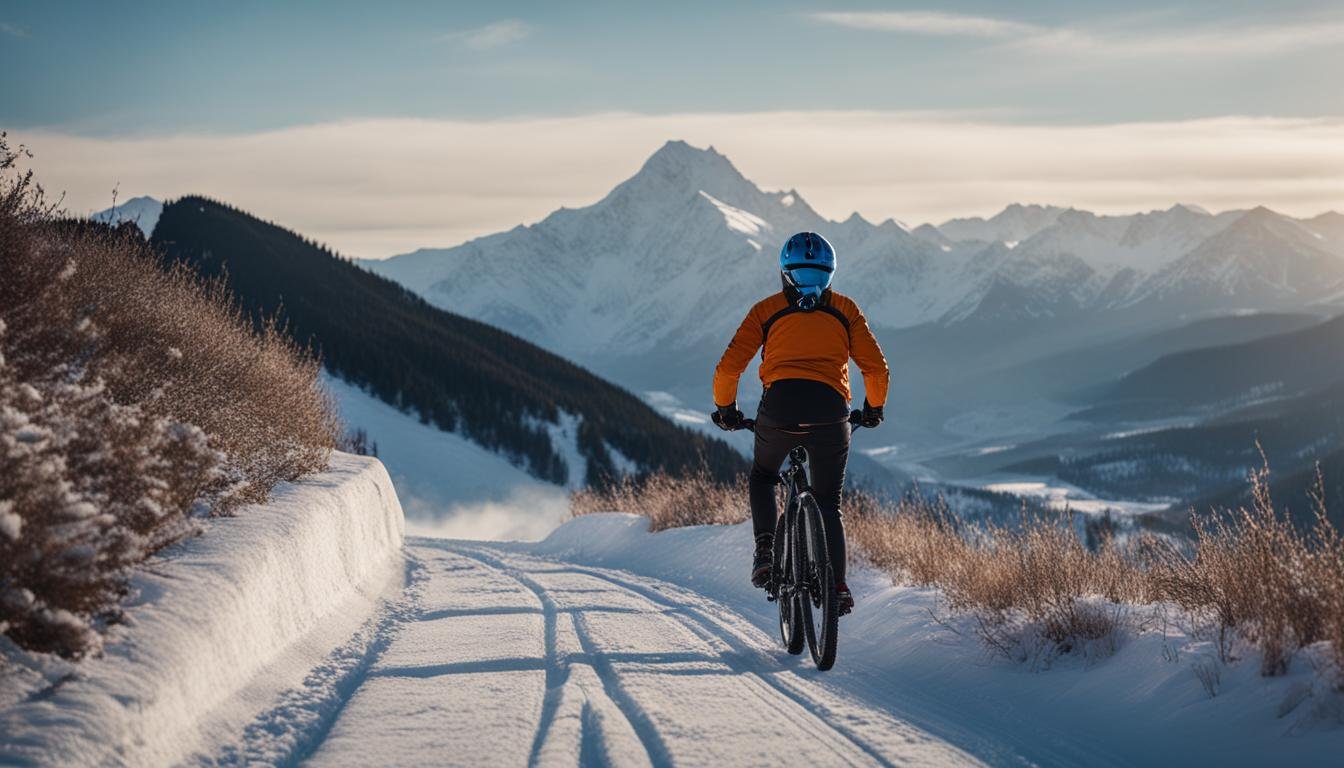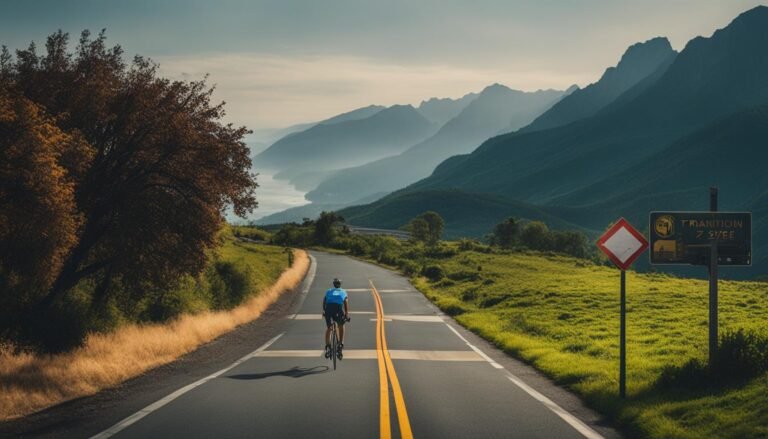Beginner Mountain Biking Tips
Start your mountain biking journey on the right track with our beginner mountain biking tips. From trail selection to bike handling, discover essential advice to boost your confidence and skills.
Welcome to the world of mountain biking, an exhilarating outdoor adventure that takes you off the beaten path and into the heart of nature.
Beginner Mountain Biking Tips
This comprehensive guide is designed to help beginners learn the ropes of mountain biking, from choosing the right gear to mastering essential riding techniques.
How to Get into Mountain Biking
Whether you’re new to the sport or looking to enhance your skills, this guide will prepare you for a safe and enjoyable mountain biking journey.
What is Mountain Biking
Mountain biking is an exhilarating outdoor activity that involves riding specially designed bicycles on off-road terrain, such as trails, mountains, and forests.
Unlike road cycling, mountain biking offers a unique experience where riders can explore natural landscapes, challenge their skills, and enjoy an adrenaline rush.
Learning Basic Mountain Biking Tips
Learning basic mountain biking tips is crucial for beginners to ensure a safe and enjoyable experience.
These tips will help you build confidence, avoid accidents, and make the most of your time on the trails.
Whether you’re new to the sport or looking to refine your skills, understanding the fundamentals is essential.
How to Pack for a Bikepacking Adventure
This comprehensive guide will take you through the essential aspects of mountain biking for beginners.
We’ll cover everything from gear selection and bike maintenance to riding techniques, safety precautions, and skill progression.
By the end of this guide, you’ll have the knowledge you need to embark on your mountain biking journey with confidence.
Essential Gear and Equipment
Choosing the Right Bike
Mountain bikes come in various types, each designed for specific terrain and riding styles. Hardtail bikes have front suspension, making them suitable for less technical trails, while full-suspension bikes provide better control on rough terrain.
Proper bike sizing is crucial for comfort and control. Consult with experts at your local bike shop to ensure you choose a bike that fits your body size and riding preferences.
Helmet and Protective Gear
Your safety should be a top priority. Always wear a certified mountain biking helmet. Additionally, consider protective gear such as knee and elbow pads, gloves, and body armor for added protection.
Basic Tools and Accessories
Carry essential tools like a multi-tool, tire repair kit, and a pump. These will help you handle minor mechanical issues on the trail.
Accessories like a hydration pack, lights, and a GPS device can enhance your riding experience.
Proper Clothing and Footwear
Wear moisture-wicking clothing that keeps you dry and comfortable. Invest in a pair of mountain biking-specific shoes with good grip for pedal control.
Dressing appropriately will make your rides more enjoyable and efficient.
Pre-Ride Preparations
Bike Inspection and Maintenance
Maintain proper tire pressure according to your bike’s specifications and the terrain you’ll be riding on. Lower pressure provides better traction on rough trails. Regularly lubricate your bike’s chain to reduce friction and improve shifting performance.
Use a chain-specific lubricant for best results. Ensure your brakes are functioning correctly, and your gears shift smoothly. If you’re unsure, seek professional maintenance or learn to adjust them yourself.
Planning Your Route
Research the trail you’ll be riding, and plan your route accordingly. Familiarize yourself with the difficulty level, length, and elevation gain of the trail to ensure it matches your skill level.
Notifying Someone of Your Ride
Always let someone know where you’re going and when you expect to return. In case of emergencies, this information can be critical for your safety.
Body Position and Balance
Maintain a relaxed and neutral riding position with a slight bend in your arms and knees. Keep your weight centered over the bike to ensure stability.
Adjust your weight distribution based on the terrain. For uphill climbs, shift your weight forward, and for descents, move it back. This helps maintain balance and control.
When riding over rocks, roots, or other obstacles, focus on keeping your upper body steady while allowing the bike to move beneath you.
This technique helps you navigate rough terrain smoothly. Use gentle, controlled movements when steering.
Avoid overreacting to obstacles, as this can lead to loss of control. Keep a firm but relaxed grip on the handlebars.
Braking and Shifting Techniques
Learn to use both your front and rear brakes effectively. In general, use the rear brake for stability and the front brake for more stopping power, but avoid excessive front brake use on slippery surfaces.
Master gear shifting to maintain a comfortable cadence (pedal rotation speed). Shift to lower gears when climbing and higher gears for descents and flat terrain.
Biking Accessories for Bike Commuters
Avoid cross-chaining (using extreme gear combinations) to prevent excessive wear. Overusing the brakes can lead to fatigue and decreased control.
Practice modulating your brake pressure to maintain a steady speed on descents without locking up the wheels.
Climbing and Descending
Climbing Techniques
Choose an appropriate gear for climbing to maintain a consistent pedal cadence. Lower gears make uphill climbs more manageable.
Lean slightly forward when climbing, keeping your weight centered over the pedals. This helps maintain traction on the rear wheel.
Descending Techniques
Shift your weight back when descending to improve stability. Keep your arms and legs slightly bent to absorb shocks and maintain control.
Select the best line to navigate obstacles and minimize the impact of rough terrain. Look ahead to anticipate obstacles and plan your path accordingly. Use the brakes judiciously on descents.
Apply consistent, controlled pressure to maintain speed and control without skidding.
Negotiating Obstacles
Familiarize yourself with common trail obstacles like rocks, roots, and logs. Learn how to approach them and practice techniques like rolling over rocks and roots and hopping over obstacles when necessary.
Master the art of bunny hopping to clear obstacles and lift your front and rear wheels independently. This skill is invaluable for advanced trail riding.
Learn how to approach and safely navigate drop-offs and roll-overs, taking into account your speed, body position, and the terrain.
Riding Etiquette and Safety
Sharing Trails with Others
Be courteous and yield the trail to hikers and runners. Slow down when passing, and give them plenty of space. Follow trail etiquette when encountering other riders.
Communicate, yield to the rider going uphill, and be respectful of their experience.
Trail Markings and Signage
Familiarize yourself with trail markings and signage, which provide important information about trail difficulty, closures, and directions. Always follow posted rules and guidelines.
First Aid and Emergency Preparedness
Carry a basic first aid kit and know how to use it. Be prepared for emergencies by having a map, compass, or GPS device, as well as the knowledge to navigate if you get lost.
Building Skills and Progressing
Regularly practice fundamental mountain biking skills like balance, cornering, and braking in controlled environments before tackling more challenging trails.
As your skills improve, gradually progress to more difficult trails. Push your limits safely, and don’t hesitate to seek guidance or ride with more experienced bikers.
Consider taking mountain biking classes or riding with experienced mentors. They can provide valuable insights, tips, and guidance to help you become a better rider.
To conclude, we’ve covered the fundamental aspects of mountain biking for beginners, from gear selection to riding techniques and safety precautions.
Remember to prioritize safety, practice your skills, and enjoy the adventure of mountain biking. Mountain biking offers an incredible way to connect with nature and challenge yourself physically and mentally.
As you embark on your mountain biking journey, always ride responsibly, respect the environment, and have fun exploring the great outdoors on two wheels.







